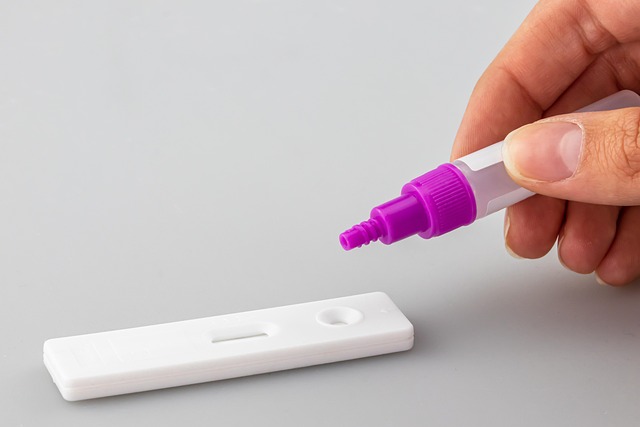In Texas (TX), lead testing is crucial for safe living conditions, especially for children and pregnant women, due to lead's severe health impacts on developing minds. Certified inspection services employ advanced techniques like paint chip sampling, dust collection, and blood testing in older homes with lead-based paints. These professionals also conduct thorough inspections in diverse sectors to ensure structural integrity, safety mechanisms, and environmental factors, prioritizing community well-being. Homeowners should follow four key steps for lead testing: identify the need, hire a certified inspector, prepare their home, and understand inspection results. Texas law requires these inspections be conducted by certified professionals for compliance and family health protection.
In Texas, understanding lead testing is crucial for maintaining a safe living environment. This article delves into the importance of certified inspection services for identifying and mitigating lead hazards in homes. From the ‘why’ and ‘what’ of lead testing to a step-by-step guide tailored for TX homeowners, we explore how to navigate this process effectively. Ensure your peace of mind and comply with Texas regulations by learning about these essential services.
- Understanding Lead Testing: The Why and What in Texas
- Certified Inspection Services: Ensuring Safety and Compliance
- Navigating the Process: Step-by-Step Guide for Homeowners in TX
Understanding Lead Testing: The Why and What in Texas

In Texas, lead testing is a critical component of ensuring safe and healthy living environments, particularly for children and pregnant women. The why behind this lies in the potential severe health effects of lead exposure, including developmental delays, learning disabilities, and neurological damage in young minds. Thus, understanding lead testing is paramount to creating a safer TX (Texas) community.
The what involves rigorous processes aimed at identifying and mitigating lead sources. Certified inspection services play a pivotal role here, employing advanced techniques like paint chip sampling, dust collection, and blood testing to assess lead levels. These methods help in pinpointing hazardous materials, especially in older homes and buildings where lead-based paints were commonly used. By adhering to stringent standards, these inspections provide crucial data for informed decision-making regarding lead abatement, ultimately safeguarding Texans from potential health risks.
Certified Inspection Services: Ensuring Safety and Compliance

In Texas, certified inspection services play a vital role in ensuring safety and compliance across various industries. These professional services are designed to meet stringent regulations and standards, providing peace of mind for businesses and consumers alike. With a focus on meticulous detail and industry expertise, certified inspectors conduct thorough evaluations, identifying potential hazards and ensuring structural integrity.
Whether it’s a construction site, industrial facility, or public space, these inspections cover a wide range of aspects. From checking safety mechanisms to evaluating environmental factors, certified inspectors are equipped to identify and mitigate risks. By adhering to recognized standards, they contribute to the overall well-being of communities across TX, fostering an environment where safety is paramount.
Navigating the Process: Step-by-Step Guide for Homeowners in TX

Navigating the process of lead testing and certified inspection services in Texas can seem daunting, but it’s a crucial step for homeowners to ensure a safe living environment. Here’s a simple guide to help you understand the steps involved:
1. Identify Your Reasons: Start by understanding why you need a lead test. Lead is a hazardous metal that was commonly used in paint and plumbing before its dangers were fully understood. If your home was built before 1978, it likely contains lead-based materials. In TX, certain situations require testing, such as selling or refinancing a property, or if a child under six lives there.
2. Hire a Certified Inspector: Texas requires that lead inspections are conducted by certified professionals. Look for inspectors with proper credentials and experience. They’ll provide you with a detailed report after the inspection, outlining any potential lead hazards and recommending safe abatement methods if necessary. This step is vital to ensure accurate results and compliance with local regulations.
3. Prepare Your Home: Before the inspector arrives, ensure your home is ready. Clear all areas where testing will occur, including floors, countertops, and play areas. Remove any objects that might interfere with sampling procedures. Keep in mind that professionals will take samples from various surfaces to get a comprehensive understanding of potential lead exposure.
4. Understand the Results: After the inspection, you’ll receive a report detailing the findings. If lead is present, understand the next steps for remediation. In TX, it’s essential to follow local guidelines for safe lead abatement and removal to protect your family’s health.
In Texas, lead testing certified inspection services are invaluable for ensuring a safe living environment. By understanding the importance of lead testing and following a structured process outlined in this guide, homeowners can navigate the potential hazards associated with lead. Certified inspectors play a crucial role in maintaining compliance with local regulations and safeguarding families from the detrimental effects of lead exposure. When it comes to lead testing in TX, proper knowledge and professional guidance are key to a healthier home.
